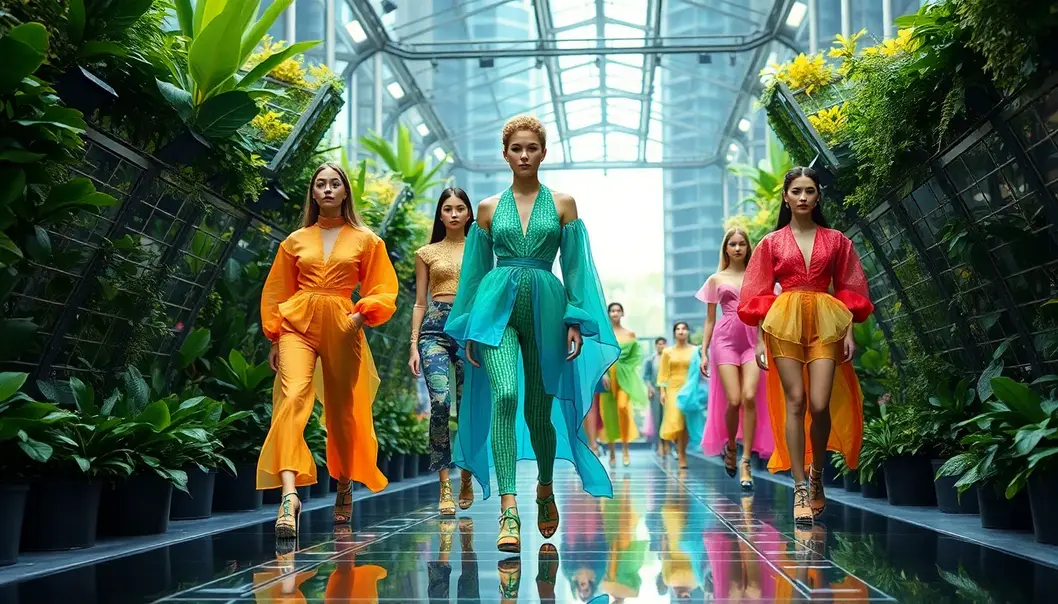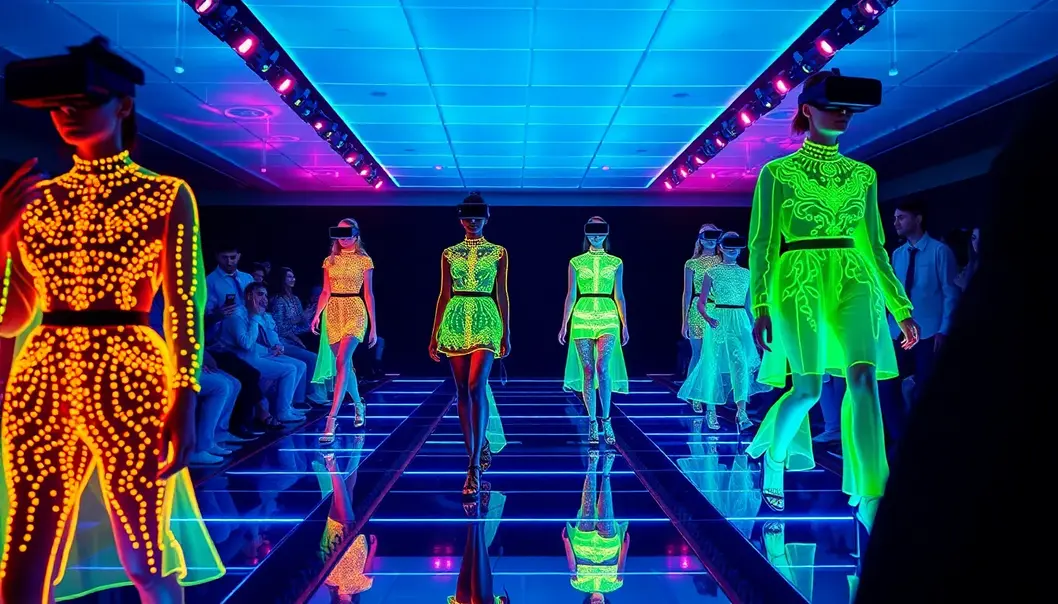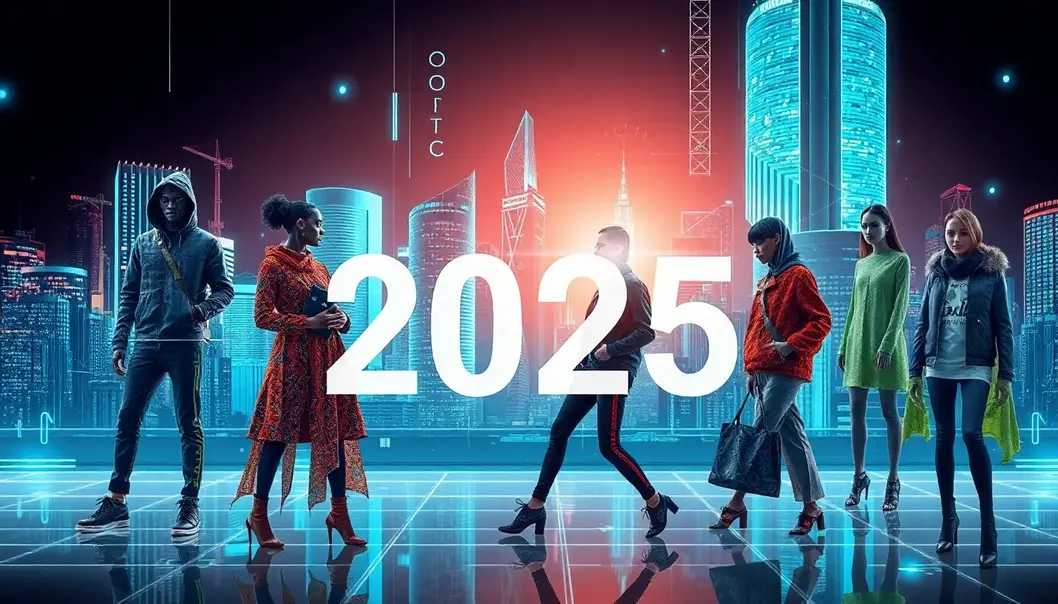As the world of fashion navigates the challenges of modernity, the year 2025 is poised to be a benchmark for creativity, sustainability, and technology. Fashion enthusiasts and analysts alike are in for a treat, as the industry adapts and transforms to reflect the evolving societal values and technological advancements. From eco-conscious materials to digital clothing, the trends of 2025 offer a unique combination of style and responsibility. Dive into this exploration of what will shape your wardrobe and define style in the coming years, pushing the boundaries of innovation while celebrating individuality.
Eco-Conscious Fashion: The Green Revolution

The fashion industry in 2025 is embracing a green revolution, redefining style with sustainability. As eco-consciousness gains momentum, this transformation is rooted deeply in materials innovation. Textile makers are experimenting with renewable resources, such as algae and agricultural waste, to create biodegradable fabrics that reduce environmental impact. These materials not only mirror nature’s resilience but are poised to replace traditional, non-sustainable fibers.
Brands are now more than ever committed to circular fashion, adopting closed-loop systems where garments are designed with their end-of-life in mind. The focus is on recycling and reimagining the lifecycle of a garment, minimizing waste and maximizing longevity. Designers craft clothing with modular features, enabling consumers to personalize and update their wardrobe without discarding entire pieces. This shift not only appeals to eco-aware consumers but also challenges designers to think creatively and sustainably.
Consumer awareness is crucial in this eco-conscious shift. Online platforms and social media campaigns are educating consumers on the environmental footprint of their clothing. This awareness drives demand for transparency in production and sourcing, urging companies to disclose their practices and encourage responsible consumption. The intersection between sustainability and fashion presents designers with an opportunity to craft garments that prioritize eco-friendly processes without sacrificing style.
By 2025, fashion shows feature eco-friendly ensembles innovatively displayed, raising consciousness about sustainable practices. These collections boast natural dyes and organic treatments, presenting a vibrant palette that harmonizes with environmental ethics. The industry’s path forward intertwines technological advancements with sustainability, promising a future where fashion thrives in harmony with the planet.
To delve deeper into sustainability practices, you may explore Heneun’s insights.
Digital Couture: Designing in the Virtual Realm

In 2025, digital fashion emerges as a key frontier in the style landscape, revolutionizing how we conceive, design, and interact with clothing. Virtual reality (VR) and augmented reality (AR) technologies propel fashion into a digital realm, allowing designers to exceed physical constraints and venture into uncharted creative territories. This digital couture is not only transforming artistic expression but also reshaping consumer habits, offering a seamless fusion where reality meets innovation.
Virtual environments enable unprecedented design flexibility, freeing creators from the limitations of traditional materials and processes. Designers employ complex 3D modeling software to craft intricate garments that might be impossible in the physical world yet come alive in the virtual sphere. This approach inspires a new aesthetic language that embraces fluidity, adaptability, and personalization. Consumers can engage deeply with designs, manipulating elements like color, texture, and form with just a few swipes.
Personalization stands at the forefront of digital fashion. Unlike traditional garments that come in predefined sizes and styles, virtual couture offers a customizable experience, tailoring each piece to individual preferences. This capability becomes pivotal in an era where individuality and self-expression dominate consumer expectations. Moreover, digital garments reduce waste and resource consumption, aligning with the sustainability trends discussed in previous chapters.
Immersive digital fashion shows capture the imagination, bypassing geographical and logistical constraints to connect with global audiences. These virtual events blend fashion with art and entertainment, incorporating live interactions, real-time adjustments, and customizable experiences. As the boundary between virtual and real continues to blur, such experiences could create entirely new consumer engagement models, carving pathways where avatars and humans interact within the same runway.
The rise of digital fashion could challenge traditional retail models, as fashion houses experiment with selling digitally exclusive collections. These garments, while residing in the digital ether, offer status and exclusivity to consumers invested in virtual social spaces. The burgeoning market for digital-only collections disrupts existing paradigms, tapping into a tech-savvy audience that values innovation over tangibility.
As digital fashion evolves, it opens profound discourse on authenticity and ownership. Tokenization through blockchain technology can authenticate digital garments, offering secure ownership records. Consumers can buy, sell, and trade digital fashion items across platforms, cultivating a secondary market premised on exclusivity and rarity. Such dynamics deepen the fashion industry’s integration with broader technological ecosystems.
The potential of digital couture in 2025 extends beyond just aesthetics and consumer engagement—it propels fashion toward a sustainable and inclusive future. By accelerating virtual fashion shows and digital wearables, we witness the dawning of a sartorial era that embraces both the tangible and the virtual. In seeking more about how such innovative realms spring to life, explore this discovery of bioluminescence for an illuminating perspective on how technology and nature intersect to create wonders.
Final words
The fashion landscape of 2025 is a thrilling fusion of technology and sustainability, setting a precedent for the future of style. As consumers become more eco-aware and technology continues to shape our experiences, fashion adapts, offering not just clothing but a lifestyle choice. Embrace these changes, as they encourage individual expression within a framework of global consciousness, heralding a new era of elegance and foresight.
Embrace the future of fashion and explore our 2025 collection today!
Learn more: https://www.fashionforward2025.com
About us
Fashion Forward 2025 offers an exclusive collection of sustainable and digitally designed fashion pieces. Immerse yourself in the future of fashion with eco-friendly materials and digital couture that stand at the intersection of style, technology, and sustainability. Discover avant-garde designs that reflect individuality and responsibility, compelling you to redefine what it means to be fashion-forward.

